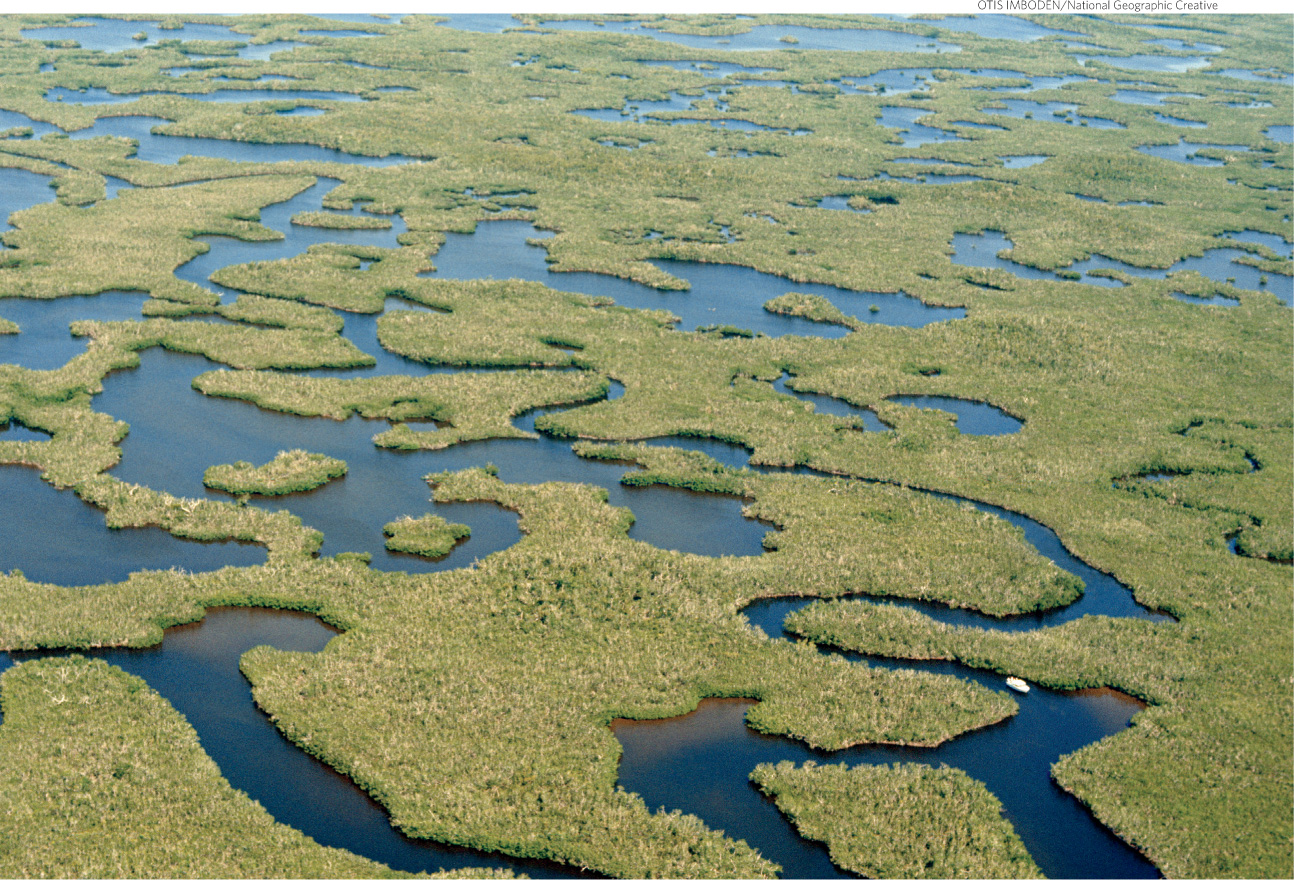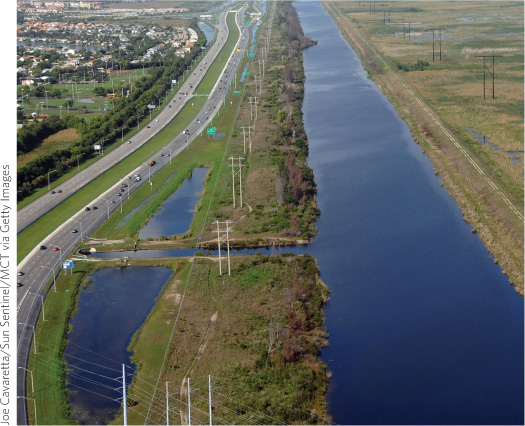The well-being of a species depends on the health of its ecosystem.
Community ecology is the study of how a given ecosystem functions—how space is structured, why certain species thrive in certain areas, and how individual species in the same community interact with one another and with their habitat.
community ecology
The study of all the populations (plants, animals, and other species) living and interacting in an area.
habitat
The physical environment in which individuals of a particular species can be found.
This includes understanding how various species contribute to ecosystem services like pollination, water purification, and nutrient cycling (see Chapter 8). Wetlands like the Florida Everglades provide extremely important water management services, including the recharge of groundwater and the capture of contaminants and excess nutrients, enabling them to be stored or converted to safer forms. This process prevents those nutrients from reaching downstream fresh- and saltwater ecosystems. Most important to us humans, however, is the wetlands’ contribution to flood control and provision of freshwater supplies. By capturing and storing large amounts of precipitation and runoff (overland flow of water) and then releasing it downstream slowly over time, wetlands significantly reduce peak flood levels during major rain events. This slow-moving water also has more time to soak into the ground, refilling groundwater supplies.
KEY CONCEPT 10.1
Community ecologists study the many populations that live and interact within a given area. Some species are particularly vulnerable to changes and are thus good indicators of an ecosystem’s health.
Community ecology also includes understanding the myriad ways in which we humans have altered various ecosystems and, in so doing, have changed the ways they function. In the Florida Everglades, which were heavily developed throughout the second half of the 20th century, infrastructure like roadways and canals have dramatically reordered the physical landscape. Meanwhile, all the pollutants that come with modern living—solid waste, agricultural chemicals, etc.—have upended the delicate balance of chemical and physical reactions that make this natural world function.
ecosystems
All the organisms in a given area plus the physical environment in which they interact.
For the wood stork—a tall wading bird that weighs up to 3 kilograms (7 pounds)—it’s all about food. During mating season alone, the birds consume an estimated 45 kilograms (100 pounds) of food—each. One captive bird ate more than 650 small fish in just 35 minutes. Indeed, their feeding habits alone make for great spectacle. They hunt almost exclusively in shallow, muddy, plant-filled water—just 15 to 50 centimeters (5 to 20 inches) deep but so cloudy that fish cannot be seen. They inch their way through these waters at a steady two-steps-per-second clip, sweeping their long, narrow bills—which are kept precisely 8 centimeters (3 inches) agape, and submerged all the way up to the breathing passage—side to side in a relentless hunt for food. When a bill’s methodical searching meets the sensation of a wriggling fish (or crayfish), it snaps shut with spectacular speed—in just 25 milliseconds, to be exact. It’s the fastest reflex known in all vertebrates, and it enables the wood stork to capture prey that no other wading birds can access.
But for this tactile (or nonvisual) feeding method to work, the prey must be densely concentrated. This means wood storks need seasonally drying wetlands to forage—and lots of them. Even a small drop in feeding success can impact the ability of these colossal birds to successfully rear their young.


It’s this sensitivity that makes the wood stork such a good indicator species for the Everglades. An indicator species is one that’s particularly vulnerable to ecosystem perturbations. Because even minor environmental changes can affect them dramatically, they can warn ecologists of a problem before it grows. “It is much easier to follow one or two species than to try and monitor an entire ecosystem,” says Rodgers, who is a wood stork specialist. “So if an indicator species can be identified, this makes it much easier to keep tabs on the health of the ecosystem.”
indicator species
A species that is particularly vulnerable to ecosystem perturbations, and that, when we monitor it, can give us advance warning of a problem.